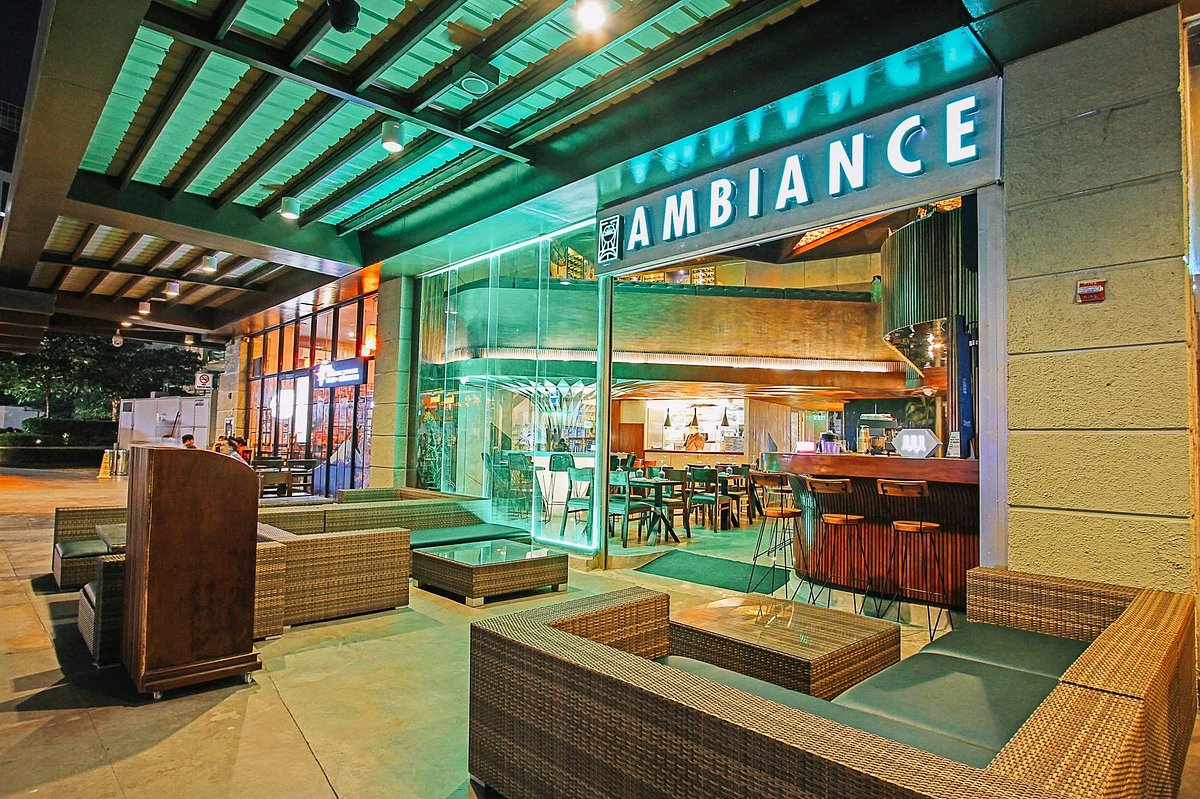Pan Asian Dining Islamabad: Enjoy Genuine Asian Recipes
Wiki Article
Savor Authentic Eastern Cuisine With a Pan-Asian Twist for a Culinary Adventure
Beginning on a culinary trip via authentic Eastern food, enhanced with a Pan-Asian twist, supplies a special possibility to discover the rich tapestry of tastes that specify the area's varied culinary practices. This experience welcomes you to relish the elegant balance of preferences-- wonderful, salted, spicy, and sour-- integrated by aromatic herbs and flavors. Visualize the innovative combination of Thai curry and ramen or the unforeseen joy of sushi burritos. As you consider these enticing meals, think about the social narratives and historic influences that form them, each bite using a story waiting to be discovered.
Exploring Pan-Asian Tastes
In the world of global gastronomy, Pan-Asian food stands out for its exceptional variety and the unified interaction of flavors from various Oriental cultures. This cooking method celebrates the abundant customs and special components found across the continent, developing a tapestry of tastes that is both appealing and gratifying. Trick to Pan-Asian food is its capacity to stabilize contrasting tastes-- pleasant, salty, spicy, and sour-- while highlighting the quality and high quality of each component.From the umami-rich soy sauce of Japan to the intense chili peppers of Thailand, Pan-Asian food supplies an extensive combination of tastes. These aspects are commonly incorporated in inventive methods, improving dishes with layers of complexity. As an example, using aromatic herbs such as lemongrass and cilantro, usual in Vietnamese and Thai cuisine, adds a refreshing brightness to meals, while the incorporation of coconut milk delivers a velvety, abundant texture.
The focus on fresh produce and fragrant spices makes sure that each meal is not just a banquet for the taste yet likewise for the senses. Pan-Asian food welcomes restaurants to start a culinary trip, exploring the vast and varied landscapes of Eastern gastronomy with every bite.
Combination Recipes to Try
While Pan-Asian food is commemorated for its conventional tastes, the modern culinary landscape is increasingly accepting combination recipes that blend these classic elements with influences from other regions. This ingenious technique not just honors the rich heritage of Eastern cooking arts yet additionally presents unique preference experiences that interest contemporary tastes buds.
An archetype of such a blend dish is the Korean-Mexican taco, where marinaded bulgogi beef is wrapped in a cozy tortilla, topped with kimchi and a spicy gochujang-infused salsa. This combination weds the vibrant, savory flavors of Korea with the vivid, fresh aspects of Mexican cuisine. In a similar way, sushi burritos have gained appeal, joining together the fragile virtuosity of Japanese sushi with the passionate, hand-held comfort of a burrito, typically featuring fusion ingredients like tempura shrimp and avocado with a drizzle of wasabi mayo.
An additional significant recipe is Thai curry ramen, which infuses the creamy, fragrant flavors of Thai curry into the calming brew of traditional Japanese ramen, creating an unified blend that entices the senses. These fusion recipes prolong past plain novelty; they stand for a culinary dialogue between societies, motivating expedition and technology on the planet of Pan-Asian food.
Essential Active Ingredients and Seasonings
To really value Pan-Asian cuisine, one should recognize the vital ingredients and spices that form its foundation. This varied culinary design draws from a rich tapestry of Eastern customs, utilizing a harmonious blend of appearances and tastes. Secret components consist of soy sauce, fish sauce, and oyster sauce, which pass on a savory umami deepness important to Oriental dishes. Complementary to these are rice vinegar and mirin, lending a delicate level of acidity and sweet taste.Fragrant aspects are pivotal, with ginger, lemongrass, and garlic being common across various Pan-Asian recipes. These components offer an aromatic base that enhances the intricacy of tastes. Spices such as star anise, cardamom, and cinnamon present warmth and personality, echoing impacts from regions like China and India.

Food Preparation Techniques and Tips
Understanding the art of Pan-Asian food calls for experience with its distinctive food preparation techniques, each contributing to the dynamic tapestry of flavors this cooking custom is celebrated for. Central to these techniques is the stir-fry, a quick food preparation strategy that protects the nutritional honesty and vivid colors of active ingredients. Using a wok, the stir-fry technique permits also warm distribution, vital for attaining the characteristic appearance and flavor equilibrium of Pan-Asian dishes.One more essential method is steaming, particularly prevalent in Chinese cuisine. This gentle method maintains the natural tastes and nutrients of ingredients, making it suitable for fish and shellfish and veggies. Dumplings, a beloved staple, typically gain from steaming, resulting in soft, delicious appearances.
Cooking, likewise essential, presents great smoky midsts to meals such as Korean bulgogi or Japanese yakitori (Chinese food Islamabad). This strategy often involves marinading active ingredients, allowing tastes to pass through deeply prior to cooking over an open fire or warmer
Lastly, mastering the art of stabilizing flavors-- wonderful, sour, salted, bitter, and umami-- is critical. Effectively layering these aspects can elevate a dish from common to remarkable, providing a facility and satisfying culinary experience that embodies the significance of Pan-Asian food.
Eating Experiences Worldwide
Around the world, Pan-Asian cuisine uses an unrivaled dining experience, commemorated for its rich tapestry of flavors and vivid presentations. This cooking phenomenon has transcended cultural limits, capturing the hearts and tastes buds of food enthusiasts worldwide. In multicultural cities like New York, London, and Sydney, Pan-Asian dining establishments function as fusions where cooking traditions from Thailand, Japan, China, and beyond merge, offering restaurants with an eclectic mix of meals that highlight the area's variety.The worldwide charm of Pan-Asian cuisine depends on its ability to supply both authenticity and advancement. Chefs masterfully marry conventional ingredients such as lemongrass, soy sauce, and miso with modern methods, causing meals that are both acquainted and refreshingly new. This combination allows restaurants to get started on a culinary trip that appreciates heritage while accepting modernity.
Furthermore, dining experiences are elevated with attentively created environments that mirror the values of Pan-Asian aesthetics. From minimal Japanese-inspired interiors to dynamic Thai-themed spaces, each dining establishment offers a distinct ambiance that complements the cooking offerings. Because of this, customers are not simply china village consuming a meal however partaking in a cultural experience, making Pan-Asian eating a really global phenomenon.
Final Thought
The expedition of Pan-Asian cuisine offers a profound understanding of the detailed interaction of flavors and culinary practices throughout Asia. By welcoming combination recipes see here such as Thai curry ramen and sushi burritos, the cooking journey not only highlights the versatility of traditional components however additionally showcases innovative contemporary methods. This gastronomic journey, improved by important flavors and cooking approaches, gives a distinct chance to appreciate the multiculturalism and culinary artistry that define Pan-Asian cuisine on a worldwide scale.Beginning on a culinary journey with genuine Eastern food, boosted with a Pan-Asian spin, supplies an unique possibility to explore the abundant tapestry of tastes that specify the area's varied cooking customs.In the world of worldwide gastronomy, Pan-Asian cuisine stands out for its amazing diversity and the unified interplay of flavors from different Asian societies. Secret to Pan-Asian food is its capacity to stabilize contrasting tastes-- wonderful, salted, spicy, and sour-- while highlighting the freshness and quality of each ingredient.

Report this wiki page